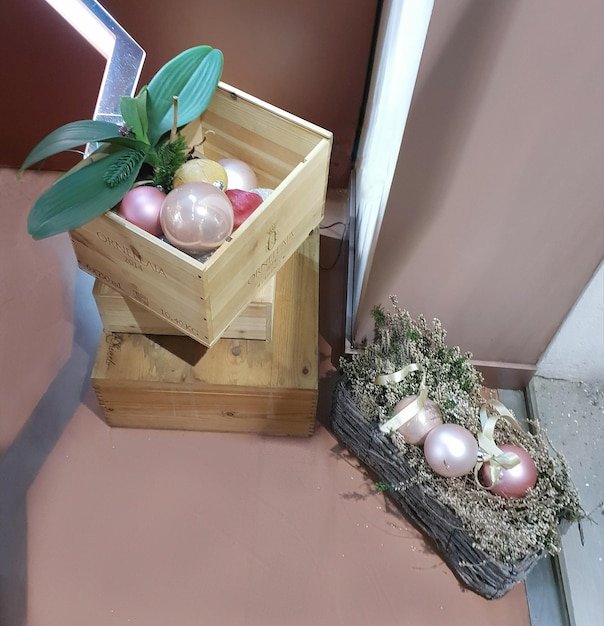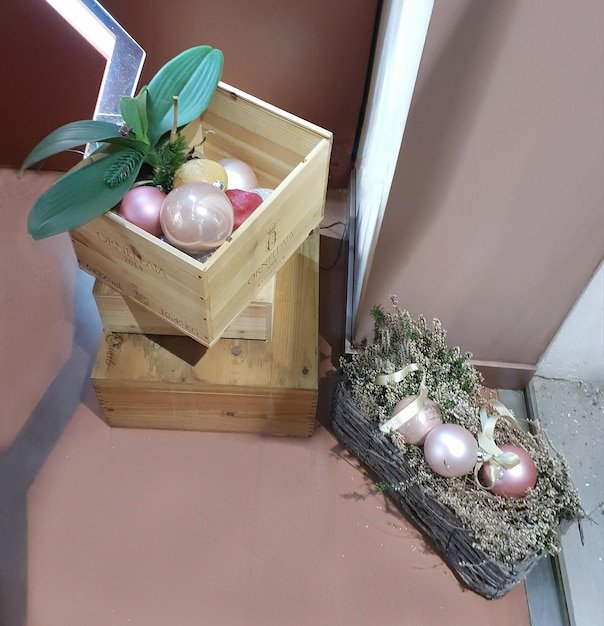Sustainable Easter Decorations USA offer an eco-conscious approach to celebrating Easter, incorporating recycled, upcycled, and natural materials to minimize environmental impact while creating beautiful and festive decorations.
Looking to celebrate Easter in a way that’s both joyful and mindful of our planet? Discover how to create stunning and sustainable Easter decorations USA, ensuring a festive holiday with a reduced environmental footprint.
Embracing Eco-Friendly Easter: Why It Matters
Easter is a time of celebration and renewal, but traditional decorations often involve single-use plastics and non-recyclable materials. Choosing sustainable Easter decorations USA allows us to celebrate while minimizing our impact on the environment.
Why is this so important? By opting for eco-friendly alternatives, we reduce waste, conserve resources, and set a positive example for future generations.
The Environmental Impact of Traditional Easter Decorations
Traditional Easter decorations, like plastic eggs and glitter-covered ornaments, contribute to landfill waste and microplastic pollution. The production of these items often involves harmful chemicals and consumes significant energy.
Benefits of Choosing Sustainable Options
Sustainable Easter decorations USA offer a range of benefits. They are often made from natural, renewable resources, biodegradable or compostable, and can be reused year after year. This reduces waste and promotes a circular economy.
- Reduce landfill waste and pollution.
- Conserve natural resources and energy.
- Create a healthier environment for all.
- Set a positive example for friends and family.
By making conscious choices, we can enjoy the holiday without compromising the health of our planet.
DIY Sustainable Easter Decorations: Creative Ideas
Creating your own sustainable Easter decorations USA can be a fun and rewarding experience. It allows you to personalize your decorations while reducing waste and saving money.
From natural egg dyes to recycled craft projects, there are endless possibilities for creating beautiful and eco-friendly decorations.

Natural Egg Dyes
Commercial egg dyes often contain artificial colors and chemicals. Natural dyes, on the other hand, are made from readily available fruits, vegetables, and spices.
Experiment with ingredients like beetroot juice for pink, spinach juice for green, turmeric for yellow, and red cabbage for blue. These dyes are non-toxic and create beautiful, subtle hues.
Recycled Craft Projects
Turn household waste into charming Easter decorations. Use cardboard boxes to create Easter bunnies, egg cartons to make flower garlands, and fabric scraps to sew colorful banners.
- Transform cardboard into Easter bunny cutouts.
- Create flower garlands from recycled egg cartons.
- Sew fabric scraps into colorful Easter banners.
- Upcycle glass jars into charming Easter centerpieces.
With a little creativity, you can transform everyday items into unique and sustainable Easter decorations USA.
Sourcing Sustainable Easter Decorations: Where to Buy
If DIY isn’t your thing, there are many retailers offering sustainable Easter decorations USA. Look for products made from natural, recycled, or ethically sourced materials.
Supporting eco-conscious businesses helps promote sustainable practices and reduces the environmental impact of your Easter celebrations.
Supporting Local Artisans
Consider purchasing handmade Easter decorations from local artisans. These items are often made with sustainable materials and support small businesses in your community.
Farmers’ markets and craft fairs are great places to find unique and eco-friendly decorations.
Choosing Eco-Friendly Retailers
Look for retailers committed to sustainability. These businesses often offer a range of eco-friendly Easter decorations, from natural egg dyes to recycled paper products.
- Search for products made from recycled materials like paper, glass, and wood.
- Choose decorations made from natural materials like wool, cotton, and bamboo.
- Support brands committed to ethical and sustainable production practices.
- Read product labels carefully to ensure sustainability claims are verified.
By making informed choices, you can easily find beautiful and sustainable Easter decorations USA that align with your values.

Tips for a Truly Sustainable Easter Celebration
Beyond decorations, there are many other ways to make your Easter celebration more sustainable. Consider opting for locally sourced food, reducing food waste, and choosing eco-friendly gifts.
Every small change can make a big difference in reducing your environmental impact.
Eco-Friendly Easter Baskets
Instead of filling Easter baskets with plastic toys and candy, opt for sustainable alternatives. Fill baskets with organic treats, seed packets, and small handmade gifts.
Use a reusable basket made from natural materials like wicker or bamboo.
Reducing Food Waste
Plan your Easter meal carefully to avoid food waste. Use leftovers creatively or compost any food scraps.
The most common mistake when planning Easter dinners is over estimating how mush food is needed.
- Plan your menu carefully and accurately to avoid food waste.
- Store leftovers properly and use them creatively the next day.
- Compost any food scraps to enrich your garden soil.
- Consider donating excess food to a local food bank.
By being mindful of food waste, you can reduce your environmental footprint and save money.
Inspiring Future Generations: Teaching Sustainability
Easter is a great opportunity to teach children about sustainability and environmental responsibility. Involving them in DIY decoration projects and discussing the importance of eco-friendly choices can have a lasting impact.
By fostering a love for nature and a sense of responsibility, we can inspire future generations to protect our planet.
Involving Children in DIY Projects
Engage children in creating sustainable Easter decorations USA. Let them help dye eggs with natural ingredients, decorate cardboard bunnies, and create flower garlands from recycled materials.
This hands-on experience will teach them about resourcefulness and creativity.
Discussing the Importance of Sustainability
Talk to children about the impact of traditional Easter decorations on the environment and explain why sustainable choices are important.
- Explain the importance of reducing waste and conserving resources.
- Encourage them to recycle and reuse materials whenever possible.
- Teach them about the benefits of choosing natural and organic products.
- Instill a sense of responsibility for protecting the environment.
By educating and inspiring children, we can empower them to become environmental stewards.
| Key Point | Brief Description |
|---|---|
| 🌿 Natural Dyes | Use beetroot, spinach, turmeric for eco-friendly egg dyeing. |
| ♻️ Recycled Crafts | Turn cardboard boxes and egg cartons into Easter decor. |
| 🛍️ Eco-Friendly Retailers | Support businesses selling sustainable Easter decorations. |
| 🧺 Sustainable Baskets | Use woven baskets and fill with organic treats. |
Conclusion
Creating sustainable Easter decorations USA is not only good for the environment, but it can also be a fun and rewarding experience for the whole family. By choosing eco-friendly materials, supporting sustainable businesses, and involving children in the process, we can celebrate Easter in a way that honors our planet and inspires future generations.

Deixe um comentário